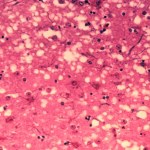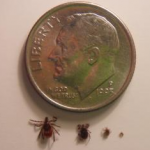Historical studies of disease
The news over the past 24 hours has exclaimed over and over:
HIV's Patient Zero Exonerated
How scientists proved the wrong man was blamed for bringing HIV to the U.S.
Researchers Clear "Patient Zero" from AIDS Origin Story
H.I.V. Arrived in the U.S. Long Before ‘Patient Zero’
Gaetan Dugas: "patient zero" not source of HIV/AIDS outbreak, study confirms
HIV's supposed "Patient Zero" in the U.S., Gaetan Dugas, is off the hook! He wasn't responsible for our outbreak!
This is presented as new information.
Gaetan Dugas, from Wikipedia.
It is not, and I think by focusing on the "exoneration" of…
[Obvious warning is obvious: potential spoilers for A Song of Ice and Fire novels/Game of Thrones TV series below].
While no one will claim that George R.R. Martin's epic series, "A Song of Ice and Fire," is historically accurate, there are a number of historical parallels that can be drawn from the characters and plotline--particularly from medieval Europe. While most of those relate to epic battles or former monarchs or other royalty, another of Martin's characters, so to speak, is the disease greyscale (1).
Greyscale is a contagious disease that seems to come in at least two distinct…
Left to right, Granny Beck, my Grandma June, and Great-Great Grandma Bertha, circa 1961. Who knows what was on the menu that day.
My Great-Grandpa and Granny Beck were, in some ways, ahead of their time. My Grandpa’s mom and step-dad, they both went through scandalous divorces and then switched partners with another couple, Granny Orpha marrying Wade and my Grandpa’s dad Lee marrying Wade’s ex-wife, Edna. Orpha and Wade raised 5 of Orpha’s boys together, and had a daughter after the divorce/remarriage.
By the time I was born, my Granny Beck was in her 80s, and I have only vague…
Yambuku, Zaire, 1976. A new disease was spreading through the population. Patients were overcome by headaches and bloody diarrhea. The disease was spreading through entire families and wiping them out.
Eight hundred and twenty-five kilometers to the northeast, a similar epidemic was reportedly raging across the border in Maridi, Sudan. Were these outbreaks connected? Despite enormous challenges trying to navigate both the logistics of crossing a landscape of unpaved and unmarked roads, as well as the political difficulties of an attempt to enter and collect samples in an area marked by recent…
I can hardly do Dr. William Foege justice with a short introduction. He is one of the scientists who led the global smallpox eradication efforts. He developed the concept of ring vaccination, which targeted vaccination to those individuals around a known case of smallpox. This concept really made eradication possible, as it eliminated the need for universal vaccination. Following the success of the smallpox campaign, he has worked tirelessly to increase global vaccination rates. He led the effort to provide low-cost treatments for river blindness, resulting in an…
Eleven years ago, two scientists made a bet. One scientist wagered that a new type of antimicrobial agent, called antimicrobial peptides, would not elicit resistance from bacterial populations which were treated with the drugs. Antimicrobial peptides are short proteins (typically 15-50 amino acids in length) that are often positively charged. They are also a part of our body's own innate immune system, and present in other species from bacteria to plants. It is thought that these peptides work primarily by disrupting the integrity of the bacterial cell, often by poking…
Student guest post by McKenzie Steger
Off the southeastern coast of Australia lies a small island that in the 1700 and 1800’s was inhabited by the very worst of Europe’s criminals and is now the only natural home in the world to a species named after the devil himself. Decades later beginning in 1996 Tasmanian devils were going about their nocturnal lifestyle in normal devilish fashion feasting on small mammals and birds, finding mates and reproducing, occasionally fighting with one another and so on. (1) Just as criminals divvied up their booty hundreds of years before, the devils were…
Student guest post by Bradley Christensen
No, this isn’t a clip from a science fiction movie. Although dramatic, this does occur in the brains of some people and animals around on our home planet. What is a prion you ask? Prions are almost as mysterious to the scientists that research them as they are to me, you and the neighbor down the street. Prion is a term used to describe an abnormal and particularly destructive strand of protein found in the brain. Proteins are the building blocks of the muscles and tissues of our bodies that work combine together to…
Student guest post by Kyle Malter
In many areas of the country there is a vile blood sucker that lurks in our forests, our parks and even our backyards. What concerns us is not what this creature takes but rather what it leaves in our body after it bites us: corkscrew shaped bacteria called spirochetes and with the name Borrelia burgdorferi. When the bacteria invade our bodies and cause problems along the way we call it Lyme disease.
It is Lyme, not “Lymes” disease, and here’s how it got that name. In the early 1970’s a large number of cases emerged involving children with a…
Student guest post by Molly Stafne
Nothing could be worse than watching your seven-year-old lying in a hospital bed fighting for his life after being diagnosed with hemolytic uremic syndrome. Unfortunately, Mary McGonigle-Martin experienced it first hand as her son, Chris, fought for his life after being poisoned by E. coli 0157:H7 found in contaminated raw milk. Like many mothers, Mary was coerced into believing the inaccurate “facts” given to her by the farm she purchased raw milk from. Too often across the US, parents are given incorrect information about the safety of the milk they drink…
I have a post up today at the Scientific American Guest blog, discussing how an earthquake and denial led to prairie dog plague. It details an outbreak of plague in Victorian San Francisco--the first time plague hit the United States--and the many downstream consequences of that outbreak (which began in 1900 and wasn't really contained until 1908). While the story is over at SciAm, here I wanted to talk more about why the outbreak became such a public health disaster.
The outbreak was first recognized by Dr. Joseph Kinyoun, a bacteriologist who had been, until his transfer to San Francisco,…
I discuss the topic of emerging infectious diseases today over at Slate, as part of their Pandemic series.
Guest post by Hillary Craddock
Last week a new study regarding Eastern Equine Encephalitis (EEE) was published online (Bingham et.al.). EEE is a mosquito-borne virus that can cause serious, and sometimes deadly, disease in humans and equines. In warmer parts of North America, the virus is spread year-round, but in areas where mosquitoes get killed off in the winter it has been something of a mystery as to how the virus makes it from year to year. Humans and equines are both dead-end hosts, which means that a mosquito can not be infected from biting an infected person or horse. Researchers in…
Rabies is a disease without a public relations firm. In developed countries, human disease is incredibly rare--we see typically one or two deaths from rabies each year. In contrast, lightning is responsible for about 60 deaths each year. However, worldwide, rabies is another matter. Today is World Rabies Day, a reminder that 55,000 people still succumb to this virus every year--most of them in impoverished regions of Africa and Asia. While cases in the U.S. are typically due to wildlife exposure (rabid bats or even beavers or rabid kitten), infected dogs remain the main vector of infection in…
Despite its reputation as a scourge of antiquity, Yersinia pestis--the bacterium that causes bubonic plague--still causes thousands of human illnesses every year. In modern times, most of these occur in Africa, and to a lesser extent in Asia, though we have a handful of cases each year in the U.S as well.
When Y. pestis was first confirmed as the cause of bubonic plague during an 1894 outbreak in Hong Kong, most people assumed that we also now knew the cause of the 14th-century Black Death, and the later plague outbreaks that resurfaced periodically. However, there has been lingering…
Regular readers don't need to be told that I'm a bit obsessed with zoonotic disease. It's what I study, and it's a big part of what I teach. I run a Center devoted to the investigation of emerging diseases, and the vast majority of all emerging diseases are zoonotic. I have an ongoing series of posts collecting my writings on emerging diseases, and far too many papers in electronic or paper format in my office to count. Why the fascination? Zoonotic diseases have been responsible for many of mankind's great plagues--the Black Death, the 1918 "Spanish" flu pandemic, or more recently, HIV/AIDS…
I know summer is winding down, but there's still plenty of beach time left and some great books to take along with you. Two giants in the field have recently released memoirs of their respective fights against infectious diseases: William Foege's House on Fire: The Fight to Eradicate Smallpox and Peter Piot's No Time to Lose: A Life in Pursuit of Deadly Viruses.
I'll begin with William Foege. Foege is a native Iowan, an Epidemic Intelligence Service alum, and former director of the Centers for Disease Control and Prevention. His book, as the title suggests, focuses on his role in the fight…
This is the fifteenth of 16 student posts, guest-authored by Cassie Klostermann.
One of the major accomplishments that public health professionals pride themselves in is the reduction of people getting sick or dying from preventable infectious diseases. Unfortunately, these debilitating, historic diseases that health professionals had once thought they had under control are starting to rear their ugly heads once again in the United States (U.S.). One of these diseases that I am referring to is measles. Measles is a highly contagious virus (from the genus Morbillivirus) spread…
This is the eighth of 16 student posts, guest-authored by Michelle Formanek.
For many of us in the scientific world, particularly budding infectious disease epidemiologists like myself, the Plague (or, more dramatically, the “Black Death”) is a prime example of the rapid and devastating spread of an infectious disease. So devastating, in fact, that it wiped out nearly one-third of the population in Europe in the mid-1300’s. That’s roughly equal to 25 million people. It then persisted and has caused various outbreaks throughout history, most notably the Great Plague of London in…




